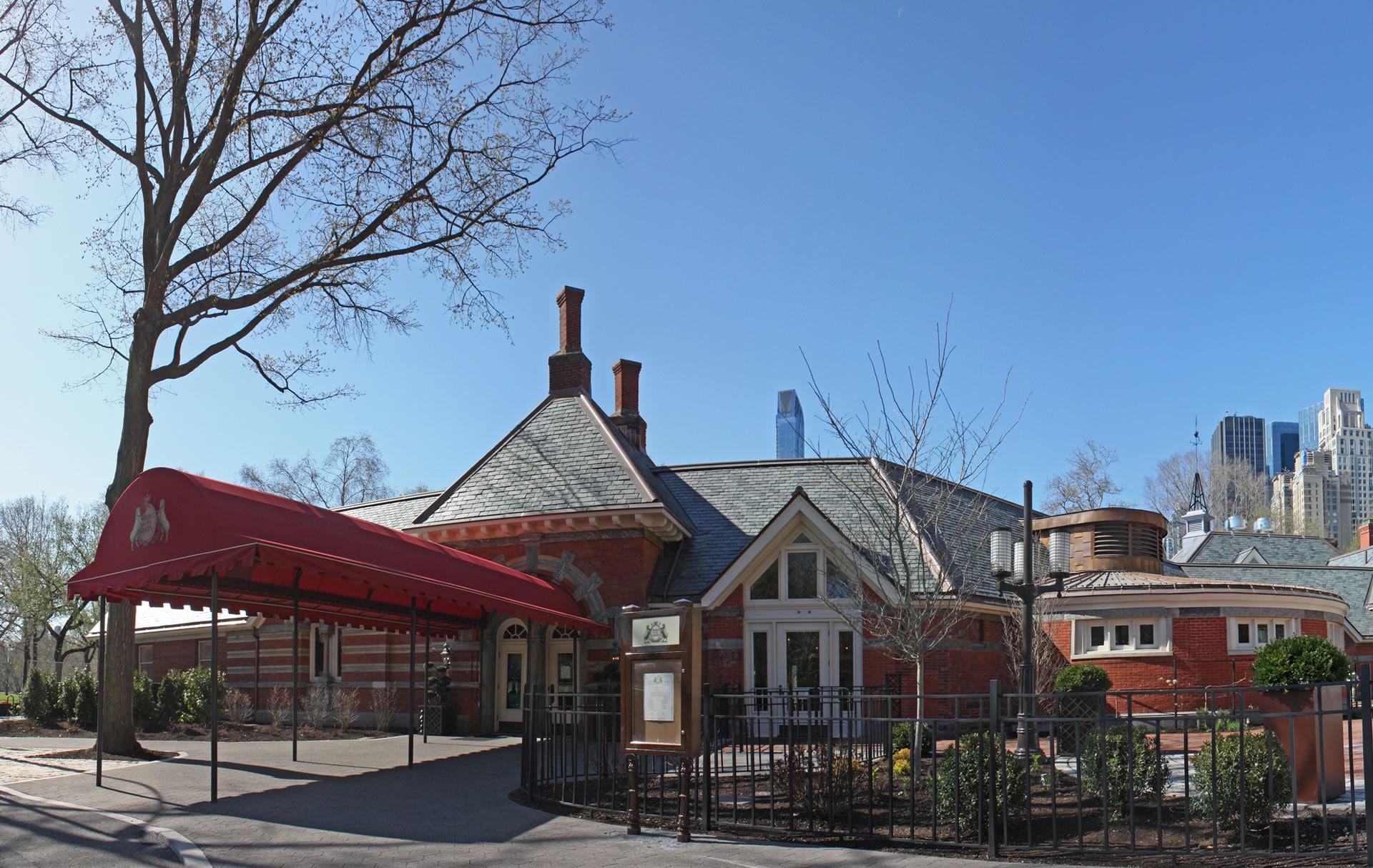Central Park’s Tavern on the Green is a New York City institution. Built in 1871 as a sheep barn, the Victorian Gothic building was converted into a restaurant in 1934, and in the following decades, underwent numerous renovations and additions that tripled its size and concealed its historic character. To return the building to its iconic status and set it up for an interior fit-out by a new restaurant, the City hired Swanke Hayden Connell Architects and a team that included Vidaris, the New York-based building-envelope consultancy, to renovate and optimize the envelope and infrastructure. Slated to achieve LEED Silver (as required by New York City for such a structure), the building was transformed into an accessible space that respects its history—and promising future.
REMOVAL VERSUS REHAB
The building’s original footprint was 8,000 square feet, but when it opened as a restaurant in 1934, that increased by another 2,000 square feet. By the time Tavern on the Green closed in 2009, after decades of poorly integrated additions, its footprint had ballooned to 32,000 square feet. “Much of the building was in terrible condition from mold, asbestos, and water damage,” says Elizabeth Moss, director of historic preservation at Swanke Hayden Connell Architects. “We realized it would be more cost effective to rehabilitate the historically significant elements and to remove the non-contributing additions.” The team determined the smallest footprint required to maintain a financially viable restaurant and reduced it to a more manageable 14,436 square feet.

This site diagram shows the drastic reduction in square footage during renovations. The 2009 footprint is the hatched area; the current footprint is gray.
PROJECT
LOCATION New York, NY
Size 14,436 ft2
Completion 2014
Certification LEED Silver (expected)
Awards BD+C Silver Renovation Award
Cost $15.9 million
TEAM
OWNER NYC Department of Design & Construction, Central Parks Conservancy, NYC Department of Parks and Recreation
Architect Swanke Hayden Connell Architects
Civil Engineer Philip Habib & Associates
Structural Engineer LPE Engineering
Mechanical/Electrical Engineer Excel Group
Landscape Architect Robin Key Landscape Architecture
Sustainability Consultant Vidaris
Cost Estimating ConCost Associates
Food Service Consultant JGL Food Service Consultant
General Contractor Atlas Restoration Corp
HVAC Contractor CDE Air Conditioning Co.
Roofing Contractor Hudson Valley Roofing & Sheet Metal, Inc.
Metal Fabricator Tri-State Metals
UNIQUE ENVELOPE
“Trying to install new insulation and improve the building envelope while keeping with the building’s historic look and feel was a challenge,” says Natalie Terrill, a LEED consultant and senior project manager at Vidaris. To avoid concealing the historic exposed trusses and joists, insulation was installed on the underside of the roof between the rafters—as opposed to the interior. “You can still read the historic barn structure of heavy timber, but the depth has been visually reduced because of the insulation behind it,” Moss says. Roof insulation values are R-24 under the slate portion and R-30 under the copper portion.
HISTORICAL BUT HIGH PERFORMANCE
As a critical piece of the building envelope, all windows and doors needed to not only be high performing, but also consistent with Tavern on the Green’s historic aesthetic. This meant weeding through the multiple add-ons over the years and attempting to replicate the building’s original openings. Using old photographs and drawings— as well as one remaining 19th-century window frame on the south elevation—Swanke Hayden Connell Architects came up with a basis of design for new, upgraded windows and doors. Manufactured by Parrett Windows & Doors, new, mahogany, double-glazed windows with a low-E coating fit into the structure’s historic context while offering high levels of energy efficiency.
REUSING DISCOVERIES
During excavation, the team uncovered 25 tons of stone units from the site, which it was able to use elsewhere in Central Park. In addition, they reused the foundation and slab on grade, exterior walls, and a structural roof deck. As a result, four of the project’s LEED points are for building reuse, according to Terrill. “We calculate that we were able to reuse 68.56 percent of the building,” she says. “We’re really pleased about that.”

The renovation team reduced the restaurant’s built footprint by nearly 20,000 square feet to better serve its 21st-century needs.

